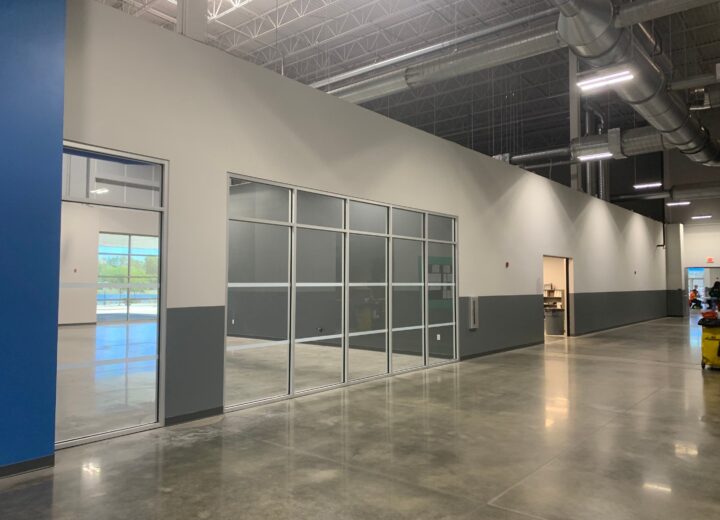 Advancements in containment and heating have made it easier to paint water tanks later in the year.
Advancements in containment and heating have made it easier to paint water tanks later in the year.
This is significant because taking tanks out of service in the summer creates a variety of issues. Water tank painting is important, but it must be balanced against the ability to deliver water at the seasonal peak of demand. Downtime can cause significant service interruption.
In colder climates, there are distinct phases to the outdoor coating season:
-
Spring is the busiest time for outdoor coating projects due to favorable weather conditions
-
Fall tends to represent a second peak in coating work that requires moderate preparation
-
Summer has few or no major coating projects and work comes to a full stop in winter
Water tank painting in the cold requires a great deal of prior planning. The safety of the painting professional is a paramount concern. Coating strategy must be adjusted to ensure successful application and long-term adhesion. In the past, water tank painting in the winter months has often meant shorter coating longevity.
These days, coatings applied in winter can be sustained long-term, but the work must be done right.
It is no longer necessary for most coating systems formulated for cold weather to wait a full 28 days for curing. Reduced downtime means it is now possible to execute on mid-sized water tank painting projects even if the water system is not equipped with multiple backup tanks. That gives project leaders many more options.
However, one thing has not changed: Controlling ambient conditions is crucial for success.
Ambient Temperatures Must Be Managed During Water Tank Painting
Temperature comes into play during water tank painting in three main ways:
-
The temperature of the substrate itself influences adhesion
-
The temperature of the surrounding air is a factor in quality
-
The temperature of the painter must be managed for safety
Although coating formulas have advanced to make winter painting easier, the same cannot be said for many of the most common equipment pieces used in commercial painting. Diesel engines and all battery-based devices will be harder to start in the cold. There is also enhanced risk to gas lines and sand pots.
Heat rapidly dissipates from a water tank because the mass of the heated air in the tank is very low compared to external air mass. Loss of heat is greatly intensified by wind, which serves to pull heat away from the structure even faster. Thus, no matter the temperature, it is best to do water tank painting when the wind is calm.
This all raises the question: How can a commercial painting team minimize heat loss?
The principal tool for preventing heat loss is the tank itself. Concrete tanks provide some insulating value of their own, but steel tanks are poor insulators that conduct heat easily. Thermal blankets or a temporary insulated roof can be used when work on the inside of the tank means inevitable heat loss.
Heating the tank can help to provide the appropriate substrate temperature, but extremely low outside air temperatures could still make this impossible. Sidewalls continue to transfer heat rapidly even when thermal blanketing is used on the roof, where heat loss measurements are always greatest.
Planning Winter Water Tank Painting for Efficiency and Safety
Luckily, not all areas need to deal with snow, blizzards, or other extreme conditions in water tank painting.
Nonetheless, it is very important to build weather preparedness into the earliest phases of your project. When discussing your plans with a professional painting contractor, they may require very detailed information in order to understand what precautions and equipment will be necessary for the job.
The size and distance of pipe runs and the point of entry into the tank are just a few considerations that an experienced painting team will use as they develop their approach. An on-site inspection by the contractor may be performed early on in the process, even before project bids have been submitted.
Ventilation, dehumidification, and heating systems must be determined in advance. These in turn influence the fuel and staffing needs for the work. For example, if a site needs to be heated for 24 hours, it is often most cost-effective to be sure painters can be there in shifts for the entire 24-hour period.
Heating, ventilation, and containment plans should be submitted for your consideration with the project bid. For project environments where snow is a concern, weather days must be built into the timeline, just as you would if performing exterior painting in the height of the summer rain season.
Executing on winter water tank painting can be a challenge. Strict adherence to OSHA safety standards makes it less hazardous, but only forethought and long experience with water tanks can ensure your project’s success. Always be certain your team has completed similar projects in the past.
{{cta(‘9de02520-f11a-488c-8c31-5b289e42101b’)}}






